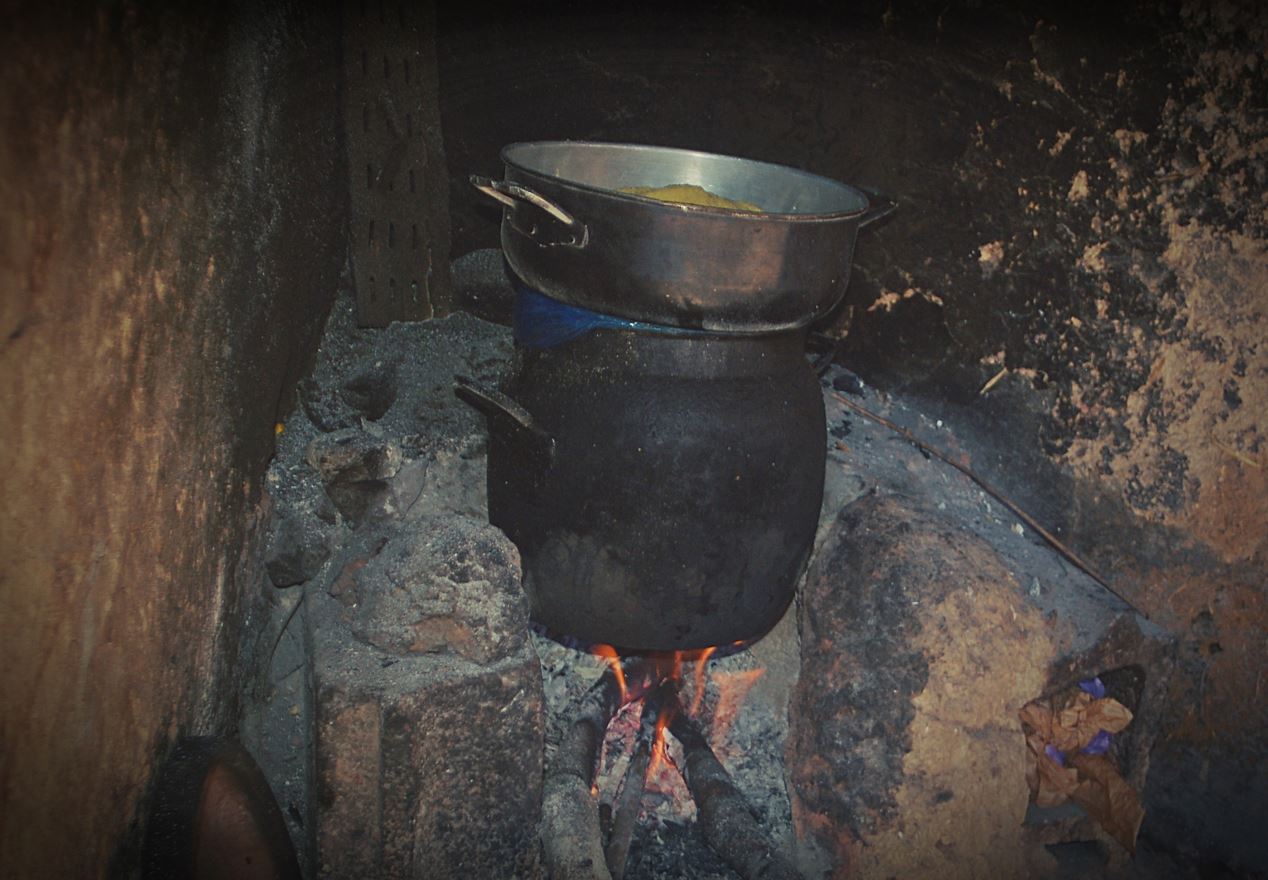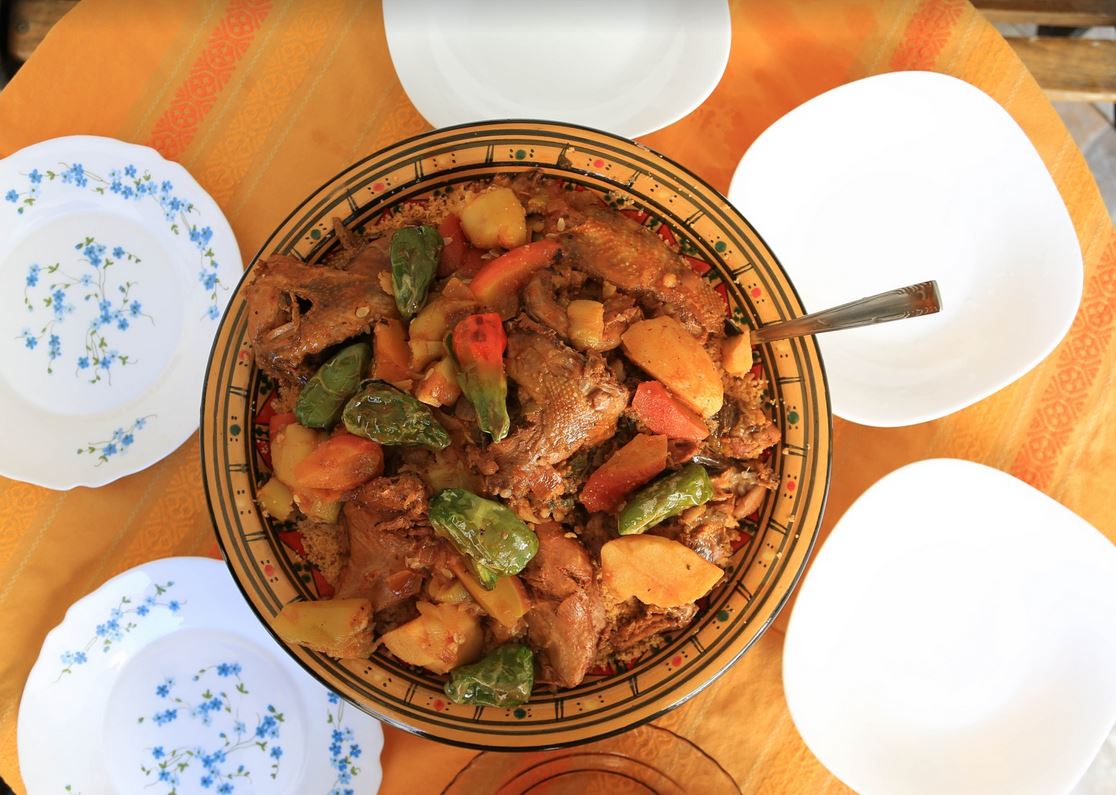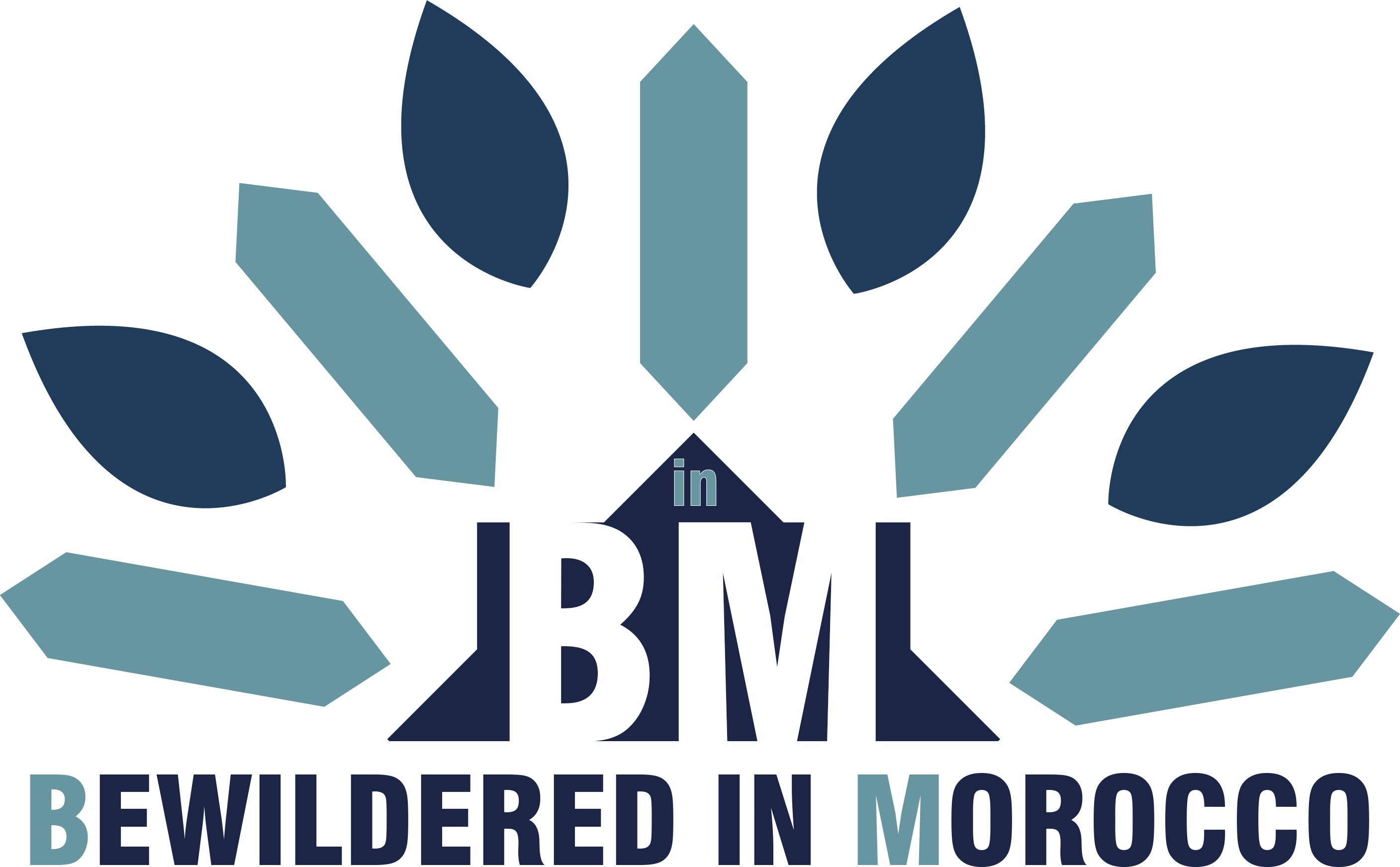Living in Morocco for over a decade, I've witnessed countless Friday afternoons where the entire neighborhood fills with the aromatic steam of Moroccan couscous wafting from kitchen windows. There's something magical about this ritual that goes far beyond just preparing a meal—it's about preserving a tradition that has united families for centuries.
In Morocco, food tells stories, and no dish narrates the country's rich heritage quite like Moroccan couscous. From my first tentative attempt at preparing this iconic dish to mastering the art of the couscoussier, I've learned that Moroccan couscous isn't just a meal—it's a celebration of life, family, and tradition wrapped in perfectly steamed semolina grains.
What Makes Moroccan Couscous So Special?
When people ask me about authentic Moroccan cuisine, Moroccan couscous is always the first dish that comes to mind. Known locally as "seksu," this isn't your average weeknight dinner. It's Morocco's national treasure, a dish so integral to the culture that UNESCO recognized couscous-making as an Intangible Cultural Heritage of Humanity.
Moroccan couscous stands apart from its North African cousins through its complex layering of flavors and the almost ceremonial preparation process. Unlike the quick-cooking versions found in Western supermarkets, authentic Moroccan couscous requires patience, technique, and what my Moroccan friends call "cooking with love."

The Heart of Moroccan Couscous: A Friday Tradition
Every Friday in Morocco, something beautiful happens. After the midday prayers, families gather around large communal platters of steaming Moroccan couscous. This weekly ritual, which I've been privileged to join countless times, reinforces the bonds of family and faith that are so central to Moroccan life.
Beyond Friday: When Moroccan Couscous Takes Center Stage
While Fridays are sacred for Moroccan couscous, this versatile dish appears at every major life celebration:
- Weddings: A symbol of abundance and prosperity for the new couple
- Religious holidays: Especially during Eid celebrations
- Baby naming ceremonies: Welcoming new life with nourishment and blessings
- Family reunions: Nothing says "welcome home" like a perfectly prepared Moroccan couscous

Deconstructing the Perfect Moroccan Couscous
After years of observing and learning from Moroccan home cooks, I've discovered that exceptional Moroccan couscous relies on five essential components:
1. The Semolina Foundation
The base of any great Moroccan couscous starts with medium-grain semolina that's been steamed multiple times in a traditional couscoussier. The grains should be fluffy, separate, and perfectly tender—never mushy or clumpy.
2. The Rich Broth (Marqa)
This is where Moroccan couscous gets its soul. Typically built around tender lamb or chicken, the broth develops deep, complex flavors through slow cooking with aromatic spices like ras el hanout, saffron, and ginger.
3. The Vegetable Symphony
Moroccan couscous vegetables aren't just additions—they're integral players. Carrots, zucchini, turnips, pumpkin, and chickpeas each contribute their unique textures and flavors to create the dish's signature harmony.
4. The Spice Blend Magic
The spice profile of Moroccan couscous is what sets it apart globally. The warm earthiness of ras el hanout, the golden luxury of saffron, and the gentle heat of ginger create a flavor profile that's unmistakably Moroccan.
5. The Finishing Touches
Preserved lemons, dried fruits like apricots or raisins, and a drizzle of quality olive oil add the final notes that elevate Moroccan couscous from good to extraordinary.
My Step-by-Step Moroccan Couscous Recipe
This is the method I learned from my neighbor Lalla Fatima, a master of traditional Moroccan couscous who's been perfecting this dish for forty years.
Ingredients for Authentic Moroccan Couscous
For the Protein and Broth:
- 1.5 kg lamb shoulder (or chicken thighs for a lighter version)
- 2 large onions, finely chopped
- 1 cup dried chickpeas (soaked overnight)
- 4 tablespoons neutral cooking oil
- 1 teaspoon each: black pepper, ground ginger, ras el hanout
- ½ teaspoon saffron threads
- Salt to taste
- 4 liters water
- Fresh parsley and cilantro
For the Vegetables:
- 4 large carrots, cut into chunks
- 2 zucchini, halved lengthwise
- 4 turnips, quartered
- 2 potatoes or sweet potatoes, quartered
- 300g pumpkin or butternut squash, chunked
- Optional: eggplant, bell peppers, or cabbage
For the Couscous:
- 2 cups medium-grain couscous semolina
- 2-4 tablespoons olive oil
- ¼ cup cold water
- ¼ teaspoon smen (Moroccan preserved butter) - optional but authentic
- Salt to taste
The Traditional Moroccan Couscous Preparation Method
Step 1: Building the Flavor BaseIn the bottom of your couscoussier (or large pot), heat the oil over medium heat. Brown the meat pieces on all sides—this creates the foundation flavor for your Moroccan couscous broth. Add the chopped onions and cook until translucent, then stir in your spice blend, coating the meat completely.
Step 2: Creating the BrothAdd the pre-soaked chickpeas and enough water to cover everything by about 2 inches. Bring to a gentle simmer, cover, and let this cook slowly while you prepare the couscous grains.
Step 3: The Art of Steaming CouscousPlace the couscous in a large bowl and drizzle with olive oil and a pinch of salt. Gently rub the grains between your palms—this prevents clumping during steaming. Transfer to the top section of your couscoussier.
Steam the couscous for 15 minutes, then remove and return to the bowl. Add a splash of cold water and gently separate the grains with your fingers or a fork. This process—called "raking"—is crucial for perfect Moroccan couscous texture.
Step 4: The Triple Steam MethodRepeat the steaming and raking process three times total. With each round, the couscous becomes more tender and fluffy. On the final steaming, incorporate a small amount of smen or butter for that authentic Moroccan couscous flavor.
Step 5: Vegetable TimingAdd your vegetables to the simmering broth in order of cooking time needed. Firm vegetables like carrots and turnips go in first, while delicate ones like zucchini are added in the final 20 minutes.
Step 6: The Grand AssemblyMound your perfectly steamed couscous on a large serving platter. Create a well in the center for the meat, and artfully arrange the vegetables around it. Ladle some broth over everything, and serve the remaining broth alongside for individuals to add as desired.
Pro Tips for Perfect Moroccan Couscous
Having made countless batches of Moroccan couscous (and having a few spectacular failures along the way), here are my hard-earned insights:
The Patience Factor: Never rush Moroccan couscous. The multiple steaming rounds aren't just tradition—they're essential for achieving the right texture.
Spice Balance: Start conservatively with spices, especially if you're new to Moroccan flavors. You can always add more, but you can't take them away.
The Steam Test: Your couscous is ready when each grain is tender but still has a slight bite—similar to perfectly cooked pasta.
Broth Depth: Let your broth simmer low and slow. The deeper the flavor develops, the more exceptional your final Moroccan couscous will be.
Moroccan Couscous: More Than Just a Recipe
What I love most about Moroccan couscous is how it embodies the Moroccan philosophy of hospitality. No one eats alone when there's couscous on the table. It's a dish that demands sharing, conversation, and connection.
During my years in Morocco, I've noticed that the best Moroccan couscous always comes from kitchens filled with laughter and stories. There's truth to the local belief that food prepared with joy tastes better—something I've experienced firsthand countless times.
Adapting Moroccan Couscous for Modern Life
While I'm a traditionalist at heart, I understand that not everyone has hours to dedicate to making Moroccan couscous from scratch. Here are some authentic shortcuts that still honor the dish's essence:
For Busy Weekdays: You can prepare the broth and vegetables ahead of time, then reheat while you steam fresh couscous.
Vegetarian Moroccan Couscous: Replace the meat with extra vegetables and use vegetable stock. Add preserved lemons and olives for depth.
Quick Steam Method: If you don't have a couscoussier, use a fine-mesh steamer over a pot of simmering broth.
The Global Journey of Moroccan Couscous
It's fascinating to see how Moroccan couscous has traveled the world while maintaining its essential character. From Parisian bistros to New York restaurants, I've encountered interpretations that range from respectfully adapted to wildly creative.
Yet there's something irreplaceably special about experiencing Moroccan couscous in its homeland, surrounded by the sounds, smells, and warmth of a Moroccan home. It's a reminder that some dishes are more than recipes—they're cultural experiences.
Making Memories with Moroccan Couscous
If you're planning to make Moroccan couscous, my advice is this: invite people over. This isn't a dish meant to be eaten alone. Call your family, text your friends, open your doors. Moroccan couscous is a celebration, and celebrations are always better when shared.
Whether you're a seasoned cook or a curious beginner, remember that every expert was once a beginner. My first attempt at Moroccan couscous was admittedly mediocre, but each time I made it, I learned something new. That's the beauty of traditional cooking—it teaches patience, technique, and the joy of creating something meaningful with your hands.
So gather your ingredients, clear your schedule, and prepare to create not just a meal, but a memory. Because that's what Moroccan couscous really is—a delicious, steaming, aromatic memory that brings people together, one grain at a time.
Have you tried making Moroccan couscous at home? I'd love to hear about your experience! Share your stories, questions, or photos in the comments below—let's keep this beautiful tradition alive together.
